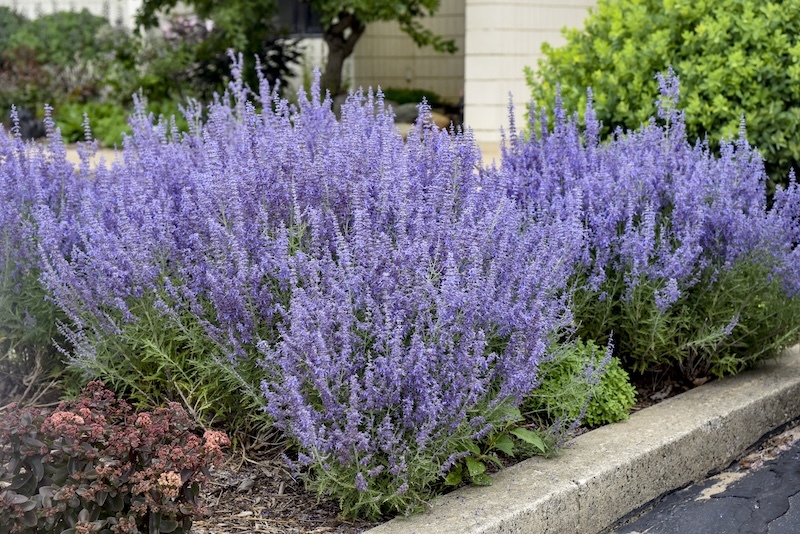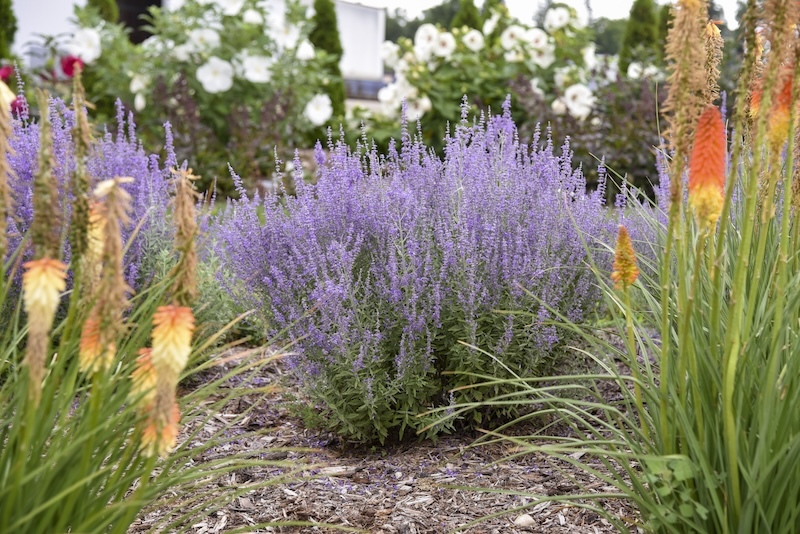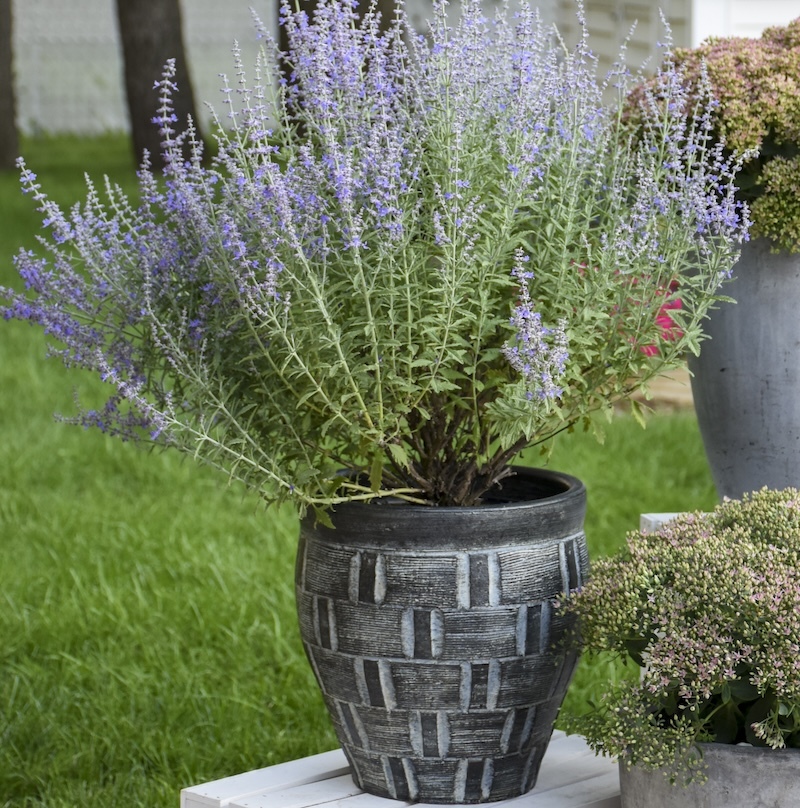Growing Russian Sage
Russian sage, previously known as Perovskia atriplicafolia, has been reclassified in the Salvia genus as Salvia yangii. This low-maintenance perennial can tolerate a wide range of growing conditions and climates. Most varieties tolerate winter temperatures as low as -20 degrees Fahrenheit and grow readily in USDA growing zones 3a-9b. Once established, Russian sage is very durable and drought resistant.

Planting Russian Sage
Russian sage requires full sun and excellent soil drainage to grow well. Less than 6 hours of direct sun can cause this plant to become leggy and floppy, requiring a support for it to remain upright. Space plants 2-3 feet apart to provide sufficient air circulation, as Russian sage can be susceptible to mildew and fungal diseases that thrive in close quarters. Upon planting, apply a layer of mulch around the plant's root zone to suppress weeds and allow for water flow.

Watering Russian Sage
Russian sage is incredibly drought tolerant once it becomes fully established. Supplemental watering is only required for newly planted specimens. Start by watering a new plant about 1-2 times a week and then taper off to a deep soak once every other week to force the roots to grow deep in the soil. Russian sage planted in poorly draining soils, like heavy clay, are more likely to develop root rot and fail to thrive.
Fertilizing Russian Sage
Drought-resistant perennials like Russian sage rarely need heavy feeding and grow best in lean soils. Over-fertilizing Russian sage can lead to weak vegetative growth that may flop onto surrounding plants. For particularly sandy or poor soils, feed plants lightly every other year in the spring using a granular slow-release product.
Pruning Russian Sage
Russian sage does not require extensive pruning. Early in the spring, remove the previous year’s top growth to reveal fresh new shoots. Make clean cuts as close to the soil level as possible. Later in the growing season, clip overgrown branches and spent flower spikes to help the plant keep its mounded shape, especially when planted near smaller perennials and annuals. You can also use bamboo stakes or peony hoops to keep Russian sage upright, although they will need to be placed early in the spring to be effective.
Caring For Russian Sage in Pots
Smaller varieties of Russian sage are perfect for growing in containers with other colorful perennials and annuals. Choose a planter with a diameter at least 2-3 inches larger than the root ball, and use an all-purpose potting mix with plenty of perlite for excellent drainage. Lightly fertilize the plants every 3-4 weeks with a balanced liquid feed, like fish emulsion or seaweed feed.

Winter Care For Russian Sage
Although Russian sage is winter hardy down to zones 3 and 4, it may need protection from prevailing storms and drying winds to ensure its return in the spring. In areas with severe winter weather, plant this perennial near a building or grow it in a container that can be moved to a protected spot in the winter. In warmer growing zones, Russian sage may remain semi-evergreen.
Sources: “Plant of the Month: Russian Sage, Perovskia, Summer Lavender.” Dallas County Master Gardener Association. dallascountymastegardeners.org
